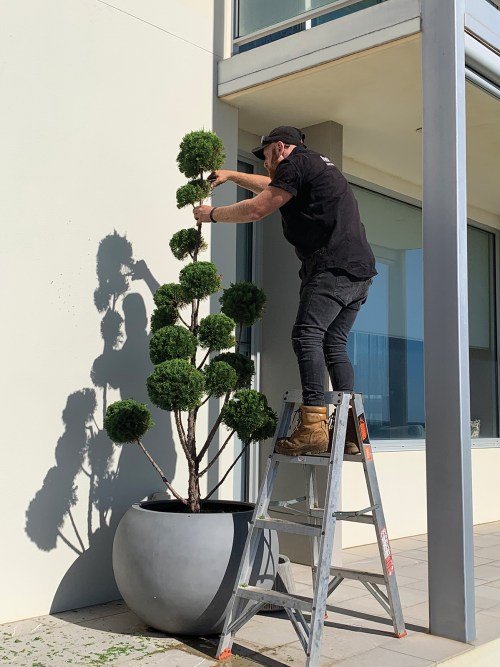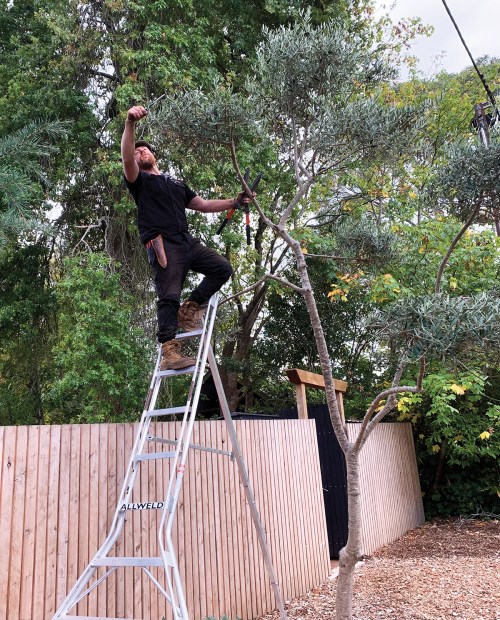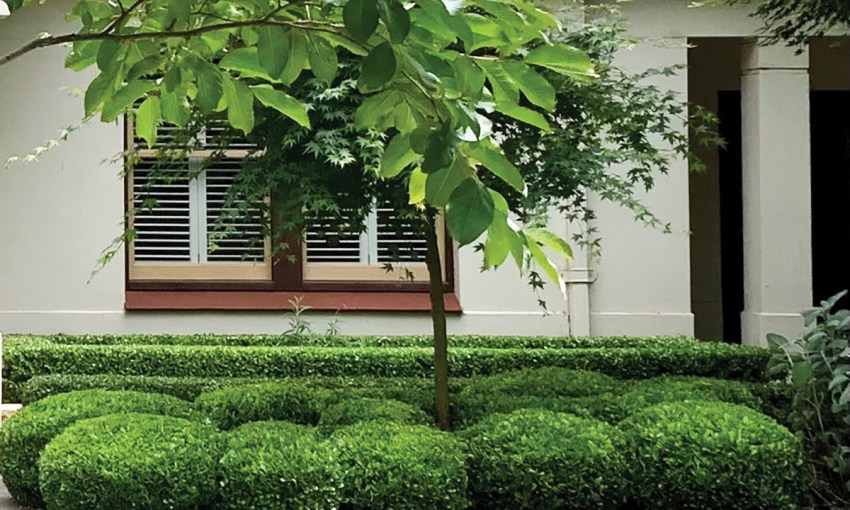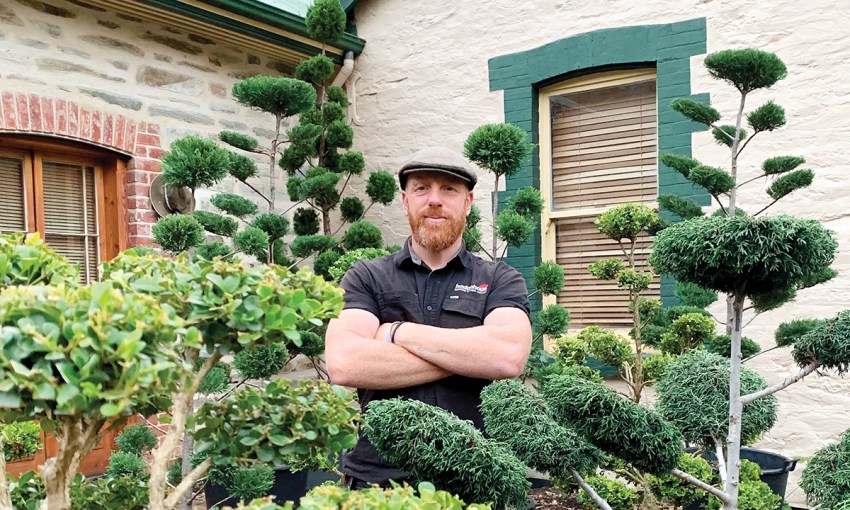Shaping plants into cloud-like patterns has become a passion for gardener Craig Sullivan, who sees a whimsical character in each of his creations.
Decorative pruning: A head in the clouds
It’s easy to see how Craig Sullivan transitioned from early childhood worker to topiary expert. He applies the same basic principles to both professions; care and consideration for his charges, shaping unruly behaviour into something more controlled and always approaching the job with respect and creativity.
Craig gave up the childcare work 20 years ago, wanting a career that would give him more time outdoors.
After a short stint as the manager of a record shop (he is also a talented pianist), Craig began landscaping with a mate and realised he was on the right path. That led to gardening work with some of Adelaide’s high-end companies, including respected Adelaide garden designer Peter Stubbs.
“We did a lot of topiary and meticulously clipped gardens, which led me into being more interested in topiary and that style of garden,” Craig says.
After gaining a diploma in landscape design, Craig established his own company Hedgehogs Gardens 12 years ago, which offers garden maintenance and design in addition to Craig’s greatest passion: specialist topiary and cloud pruning.
Cloud pruning is a form of topiary, based on a Japanese pruning technique called Niwaki.
“Bonsai refers to tiny trees in pots, whereas Niwaki is shaping full-sized trees,” Craig says.
“I honed my skills with Peter Stubbs and started playing with topiary myself, and became particularly fond of the cloud pruning. Since then, I’ve had the opportunity to work with a few 25-plus-year-old plants that were earmarked for removal. I was able to strip them back and turned them into a feature. So, not only saving their lives but giving them a new life.”

Craig says there are two styles of cloud pruning: eastern and western.
“Western is your classic shapes of pom-poms or balls on sticks,” he says. “But with eastern cloud pruning, which is a style that I’m trying to reproduce at the moment, that is a more flattened out, windswept bonsai kind of look. I went to Japan three years ago and hung out with some gardeners there to learn more about it.”
This eastern style of cloud-pruned plants is currently very much in vogue in Adelaide, according to Craig, who says he sees character in every plant he works with.
“With cloud pruning, and especially stripping plants back, I find each of them has a little character and they become quite playful; it’s almost like they’re striking a pose,” he says. “It’s like they choose what they want to be, so each one turns out a bit different to the others. They really add this whimsical character to the place and take on a life of their own.
“I think that’s what a lot of people are liking about them. If I’m driving around with them in the trailer, they are real head-turners.”
While any plant can lend itself to cloud pruning, it is commonly applied to conifers and buxus. However, varieties such as camellias and olives and even Australian natives can also be cloud pruned.
“Go for good, hardy South Australian plants,” Craig says. “There is a whole range of plants you can use for topiary. I’ve got some nice melaleuca, some natives, that I bonsaied and they look amazing. It’s pretty diverse and it’s just a matter of controlling the plants as you want to.”

Craig encourages anyone to have a go at cloud pruning, all you need is a clear vision of what you want to achieve, special pruning shears and the confidence to give it a go.
“As far as I’m concerned it’s not rocket science,” he says.
“I call it creative pruning, so if you have a creative streak, this is a form of gardening that’s not too hard: it’s just making shapes.”
However, Craig admits it does take some practice to become proficient at cloud pruning, and a good dose of patience is also required as it can take two or three years to create the shape you want.
Craig was recently awarded the Master Landscapers of SA award for Best Design under $40,000 for a Japanese-inspired garden he created in Stirling.
“I added some feature cloud-pruned plants and pruned an old olive tree and made it look like an enormous bonsai in a Niwiki style,” he says.
“There is a certain satisfaction looking back at what you’ve created, and it feels like a living work of art. You’re creating a living canvas that people can appreciate and live with as part of their daily lives. That’s what I love about gardening; the creation and looking at the finished result is so satisfying.”

Clouding, as opposed to cloud pruning, is another form of topiary that Craig also practices, which is creating balls joined together, emulating rolling hills.
“That’s quite a Japanese technique and it’s also big in France; it has been around for centuries,” he says.
“Just having those balls and rolling shapes throughout your garden is super trendy at the moment.”
Since COVID hit and people are spending more time on their gardens, Craig says he and his team of three at Hedgehogs are busier than ever. That leaves less time for the 46-year-old to spend in his own garden. He lives on 20 acres in Cherryville in the Adelaide Hills with wife Tara, who also works for the company, and their four-year-old daughter Amelie.
“Amelie loves the veggie patch and she loves picking the apples and helping in the vineyard,” Craig says.
About half of the family’s property is bushland, but there is also a large topiary nursery where Craig creates cloud-pruned plants for clients.
“Sometimes it’s hard to let them go,” he says.
“I don’t know if someone is going to look after them properly or what they’re going to turn into. I guess I’ll have to learn to be a bit more zen about it.”
This story first appeared in the May 2021 issue of SALIFE magazine.



